Your Cart is Empty
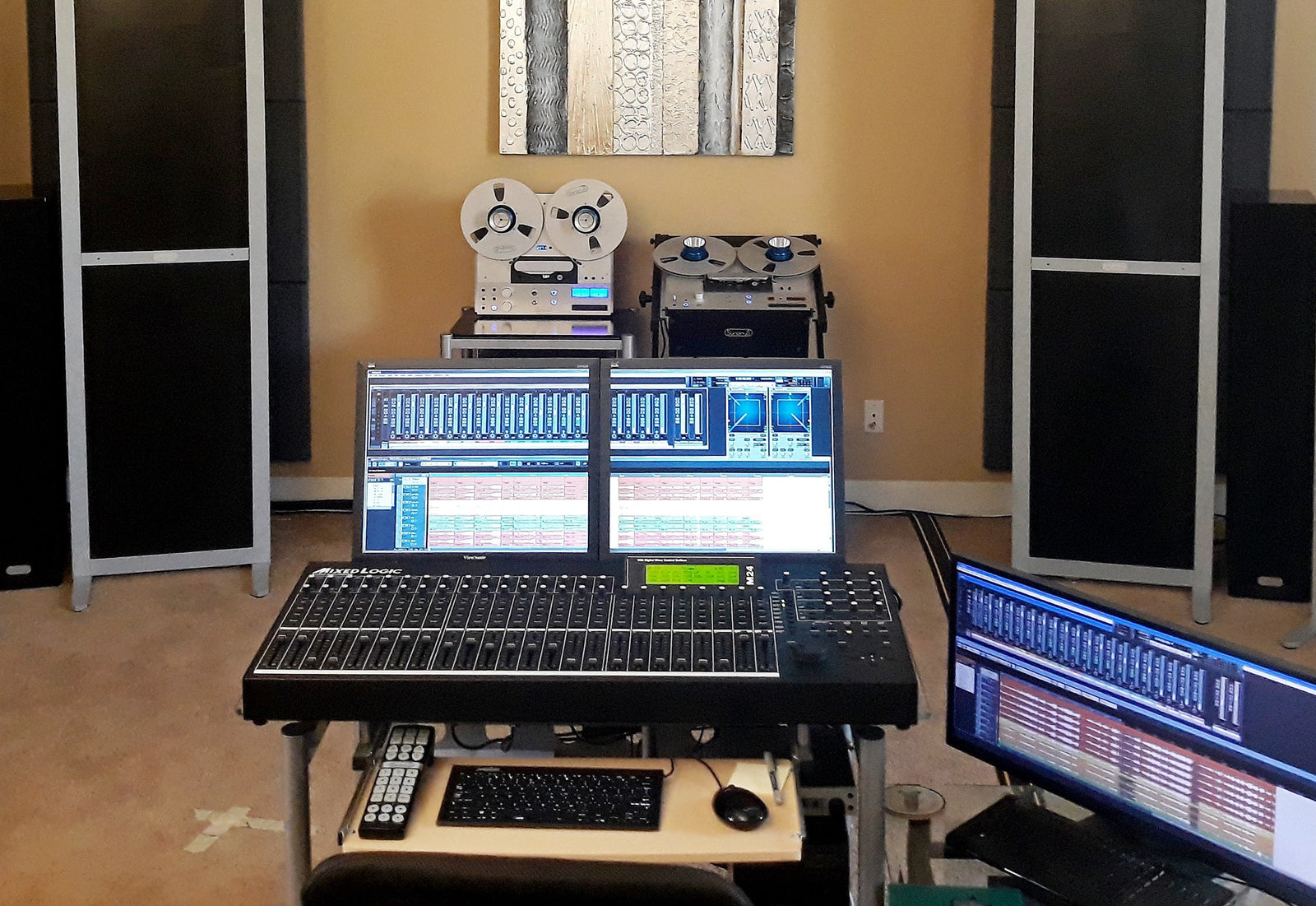
Let's face it: audiophiles are always in pursuit of that increase in sound reproduction quality. We frequently concentrate on improving the equipment, the room acoustics and, to a lesser degree, the media source we're trying to replicate.
This post delves into the latter category: enhancements to the actual recorded media. Numerous vinyl albums have been remastered, and indeed, several hundred tapes have undergone remastering from the master or near-master. These offer notable improvements in sound quality compared to the original recordings.
Suppose you could take a remastered album and elevate it even more?
The Sonorus Audio Holographic Imaging Tape Service
Introducing Arian Jansen, the owner of Sonorus Audio and the innovator behind Sonorus Holographic Imaging (SHI) tape service. Arian boasts a distinguished background in electrical engineering and product development. It's possible you even possess devices influenced by his expertise, such as certain cell phone chargers.
Apart from being an electrical engineer, Arian is well versed in psychoacoustics, a branch of psychology that studies the perception of sound and its physiological effects. In simpler terms, it examines how the human auditory system processes sound waves, including aspects like pitch, loudness and spatial localization.
Using this knowledge, Arian has devised a method to enhance the sound from our two-channel systems through a fully analog remastering process, which he dubs "Holographic Imaging." This technique has proven effective on many recordings.
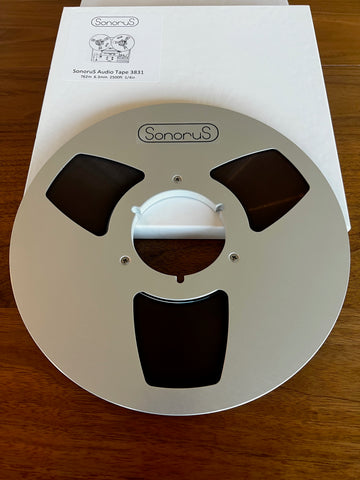
What is Holographic Imaging?
To explain the outcome, picture yourself listening to your favorite band in a cozy music hall. In such settings, you discern nuanced differences that conjure that "live sound." Our premium two-channel systems, though excellent, are constrained by the sound produced from two speakers placed X feet apart and Y feet from our chair. Interestingly enough, this speaker placement is not at all a logical derivation from either the live performance or the microphone techniques used, yet it is the way everyone listens to recorded music over loudspeakers. In conventional stereo mastering, engineers do not take this discrepancy into account except for the fact that they use the same speaker setup during the mixing and mastering stage. Still, the recording/playback discrepancy is never specifically addressed.
This is where psychoacoustics plays its role. By grasping how we typically interpret sound from a two-channel system, Arian can remaster the material so that our mind processes it as if we're hearing it from various instruments placed in multiple places. The SHI process effectively provides the conversion from conventional stereo recording techniques to the playback setup that everybody uses in practice.
The improvements are significant: more pop, increased depth, enhanced soundstage, and a more three-dimensional auditory experience reminiscent of that music hall. “It’s really about the soundstage and ambiance, literally taking the two-track stereo and making it three dimensional." “It places you in the system. It comes alive.” As Dana Holmes, an owner of over 25 SHI tapes, states, “this is what spending money on sound improvements should get me, and it delivers.”
I agree with the assessment. The SHI tapes I've played all feature prominently enhanced drum sounds, with crisper cymbals and clearer background nuances. The soundstage is noticeably broader, and the overall listening experience is incredibly pleasing. Even my wife, who isn't particularly into high-fidelity audio, remarked that it was as if our speakers had been unveiled, particularly while we were enjoying Fleetwood Mac's "The Dance" together.
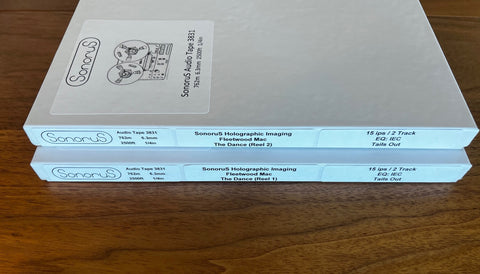
All analog remastering:
Arian has conducted extensive testing over the years. "I've explored how people perceive sound, both live and recorded, which is essentially an illusion of a live performance," he explains. "Much of my work revolves around understanding how the brain interprets that signal. That's why I exclusively use analog circuitry for remastering. While digital tools might seem more convenient, they can introduce peculiar unnatural characteristics. Even if we can't directly hear it, we can sense it. In contrast, analog is entirely natural, and this makes a significant difference," Arian adds.
"In the beginning, I utilized both digital DSP and analog in my remastering process. It seemed more straightforward, but I noticed anomalies on the electrical analyzers. Visually, it appeared fine, but there was a distinct time deviation. In the digital realm, operations occur in a data pipeline. To achieve certain filter attributes and phase shifts, data can be pulled from future points, introducing time-jumping artifacts. This results in signal ringing from events that haven't occurred yet. Despite measuring accurately, our brains struggle to process it, affecting the illusion we aim to create," Arian notes.
He continues, "I concluded that by working solely in the analog domain, I'd avoid these issues. Even if I start with a digital source, I convert it to analog, and all the SHI remastering is performed in the analog domain. This approach is crucial to producing that rich, ambient sound reminiscent of a music hall."
What recordings work best for SHI?
Most recordings can benefit from SHI, but not all. A subpar recording won't be transformed into a stellar one, but a good recording has the potential to become exceptional. On this topic, Arian offers some insights on ideal candidates.
"Digital recordings or remasters post year-2000 are generally suitable," Arian notes. "If given a choice between an early pressing from the 70s and a post-2000 remastered version, the latter will likely be superior. This preference stems from the advancements in digital formats in the late 1990s, which brought significant detail to these recordings." Arian further explains that optimal outcomes are achieved with recordings sourced from analog master tapes, high-quality remastered digital files, or high-resolution digital formats. While Arian can work directly from vinyl, these recordings inherently possess noise as well as other vinyl related anomalies that sometimes can get exacerbated with the Holographic process.
What music genre works best for holographic imaging?
While there aren't strict limitations, certain music genres yield better results with SHI. Classical, opera, and most acoustical pieces are particularly well-suited. However, early jazz recordings can be less optimal. This is often due to the proximity of musicians, each with their own microphone, capturing sound reverberations within the room differently. Such setups don't readily support the intricate unpacking integral to SHI. This characteristic is especially evident in jazz from the late 50s and early 60s.
Before proceeding with the Holographic service on any album, Arian previews it to determine its suitability. He notes that one of the most sought-after albums, "Kind of Blue" by Miles Davis, doesn't fare well in this process, exemplifying the aforementioned challenges with early jazz recordings.
Except for the acoustical genres mentioned above, SHI also lends itself very well for a broad range of rock and pop albums that predominantly have engineered soundstages and ambience. If that is well done in the recording and mixing stages, the SHI remastering process can lead to some remarkable results.
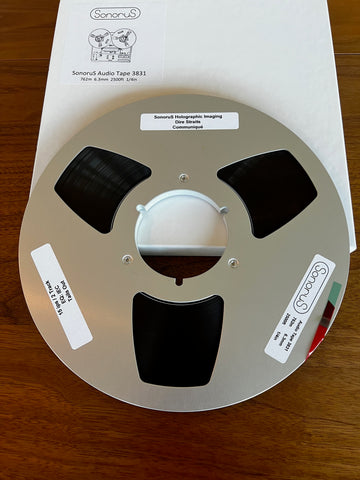
Some exemplary rock and pop album choices for SHI include:
- Pink Floyd – Dark Side of the Moon and most Pink Floyd releases.
- Steely Dan – Aja & Gaucho – their later recordings are best.
- Donald Fagen – Morph the Cat, The Nightfly.
- Dire Straits
- Roger Waters
- Fleetwood Mac
- Tears for Fears
- Simple Minds
- Michael Jackson
Generally, SHI performs very well with live recordings even though it cannot fix some of the microphone-related colorations that are inevitable with live rock concerts. Great live performances, such as the Eagles' "Hell Freezes Over," Fleetwood Mac's "The Dance," Adele's "Live at Royal Albert Hall" and Alison Krauss & Union Station's "Live," were expertly engineered and sound exceptional after the Holographic treatment.
Summary
In conclusion, Arian Jansen's Sonorus Holographic Imaging (SHI) introduces a refreshing perspective to audio experiences. Utilizing deep psychoacoustic insights through an analog process, Jansen enhances the richness of sound. Many classic and contemporary recordings find a renewed vibrancy with SHI.
How the Order Process Works
You must own a physical copy of the album, CD or even an 8-track, that you wish to undergo Holographic Imaging processing. To verify ownership, send a photo of yourself with the album to Arian. This step ensures legal compliance. There's no need to ship your album or CD; simply demonstrate ownership. The remastered version will be provided exclusively on reel-to-reel tape. You have the option of the 1-mil high-performance ¼” studio master tape (45-minute recording capacity) or the 1.5-mil 1/4" studio master tape (32-minute recording capacity). Additionally, you can choose between a standard aluminum reel or the premium Carbon Fiber Studio RX Reel for the 1.5-mil tape.
Price List:

Note: Effective October 1, 2025 SHI tapes are only available to those who own a Sonorus tape machine.

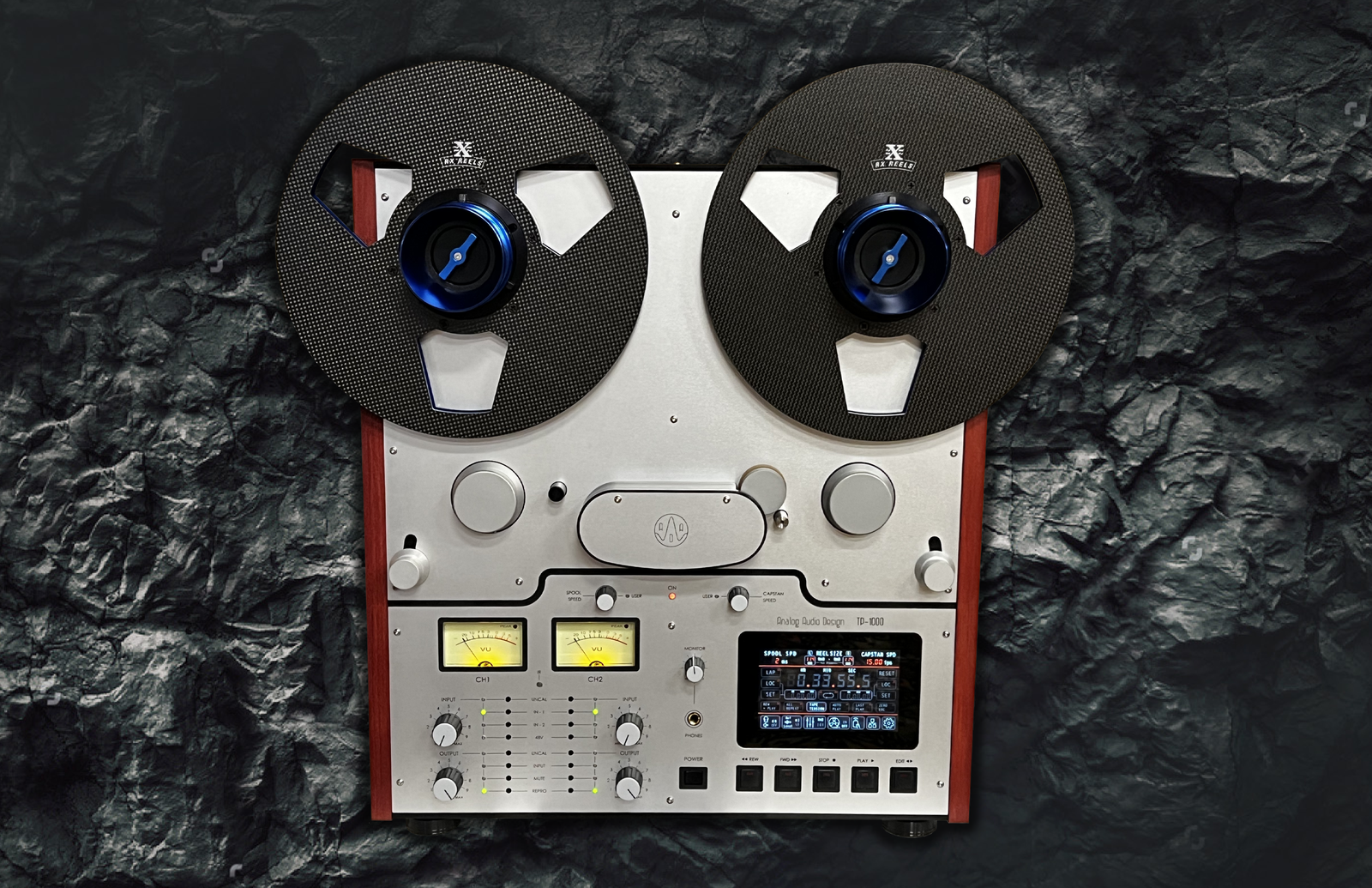
Analog Audio Design's first product, the TP-1000 is wholly constructed from new components, utilizing technologies such as computer-aided design and advanced testing tools to augment tape transport and minimize distortion.
The all important heads are from AM Belgium, the same company that inherited the head technical specs directly from Studer / ReVox when they shut down.
The TP-1000 stands out as a three-motor machine using DC motors, all uniquely coupled by a belt and a flywheel to a modern design. Why? To reducing the cogging and flutter commonly associated with DC motors.
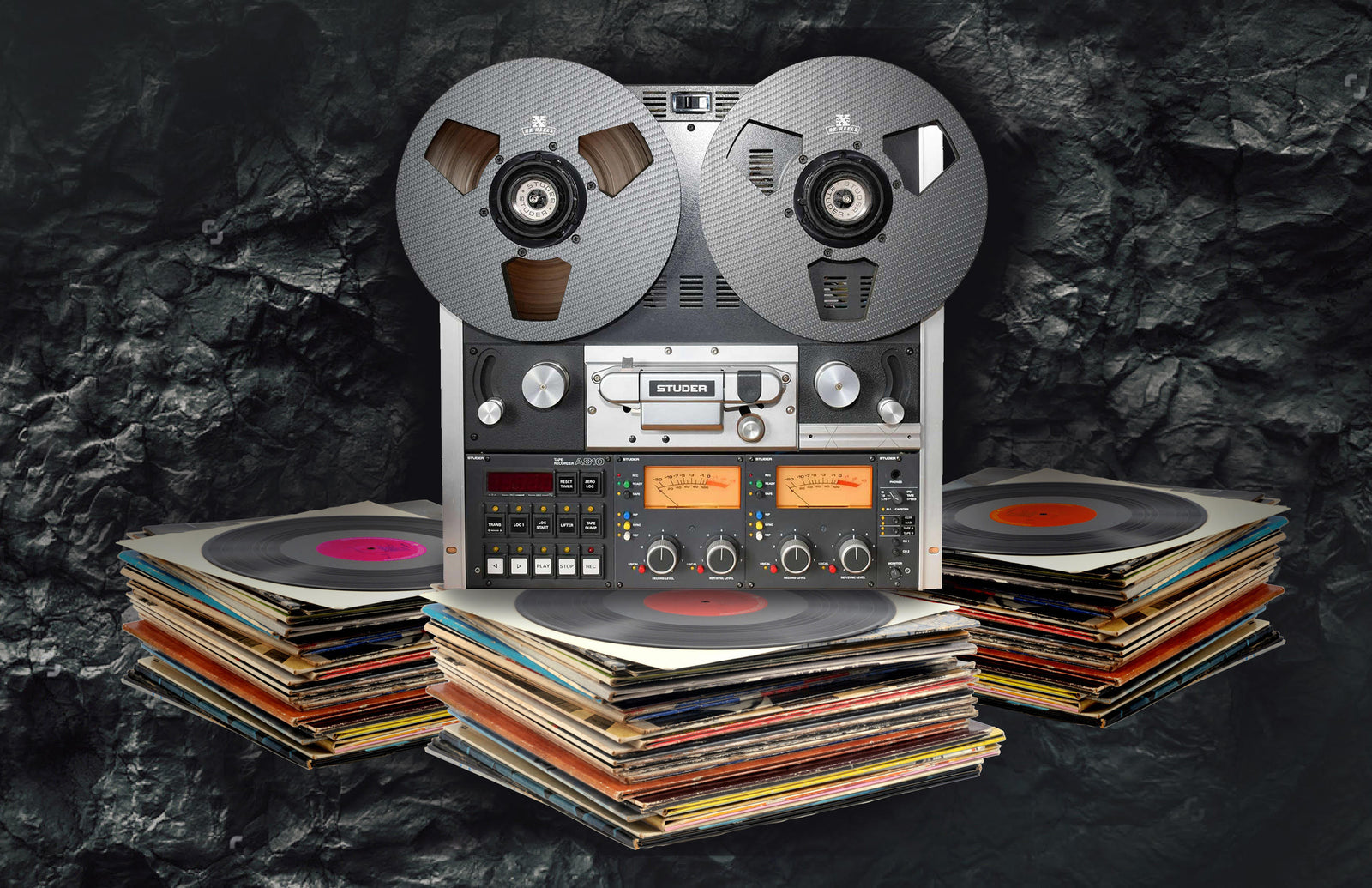
For decades, audiophiles have debated the merits of vinyl versus digital music. But another format has been reemerging in recent years: reel-to-reel magnetic tape. And why is reel-to-reel making a comeback? Because modern reel-to-reel audio recording produces superior sound quality.